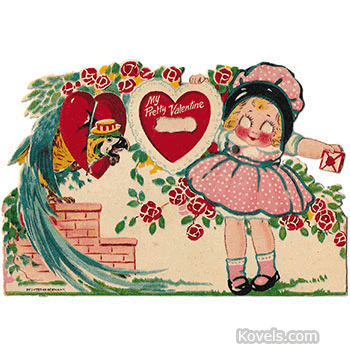The custom of sending valentine cards is not new. It goes back to the 17th century. The English author Samuel Pepys mentioned valentines in his diary on Valentine’s Day in 1667. In those days, a valentine was homemade. By the 1750s, the handwritten note could be put on gilt-edged paper found in markets. A few commercial valentines could be found between about 1800 to the late 1830s, but it was England’s 1839 Penny Postage Act that made store-bought valentines popular. Each card could have a matching envelope.
In the United States in the 1840s, a valentine needed 5 cents in postage. Elaborate, often hand-assembled cards were sold, and all sorts of unusual 3-D and mechanical cards were also made. But it was at the beginning of the 20th century that valentine postcards became so popular they were preferred to the earlier lacy styles. Chromolithographed cards were made by the millions in Germany and England. Raphael Tuck & Sons of England and, later, New York, made many of them. Cards were sent to friends, relatives and of course, sweethearts. “Vinegars” or “penny dreadfuls” were sent to disagreeable people who seemed to deserve them. Collectors today want all types of old cards. Save the most interesting new ones, too. Cards with movie or cartoon figures, trains, cars, planes, phones or any modern item that in the future will help date the cards will be valuable. So will cards related to a political event or a war. But best will always be a card that expresses the valentine theme of love.
Mechanical valentines are especially popular. This inexpensive mechanical valentine was made in the 1930s. The words and the clothing are clues to its date. As the girl moves her arm, she bats her googly eyes, the parrot moves and and her Valentine message appears in the heart.
Happy Valentine’s Day from the Kovels!




I notice that her message is misspelled!